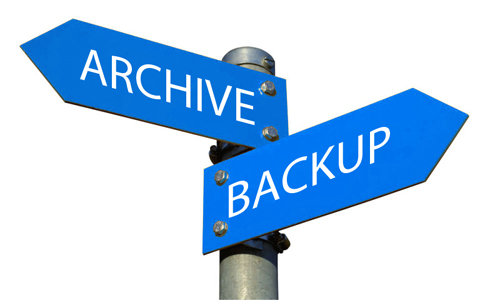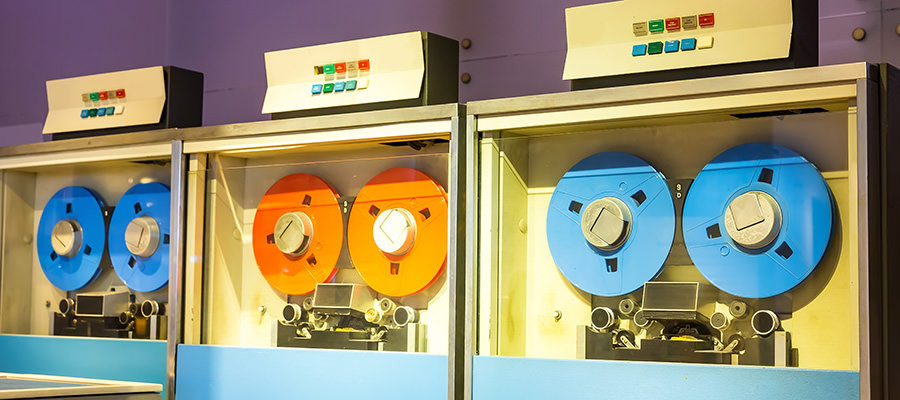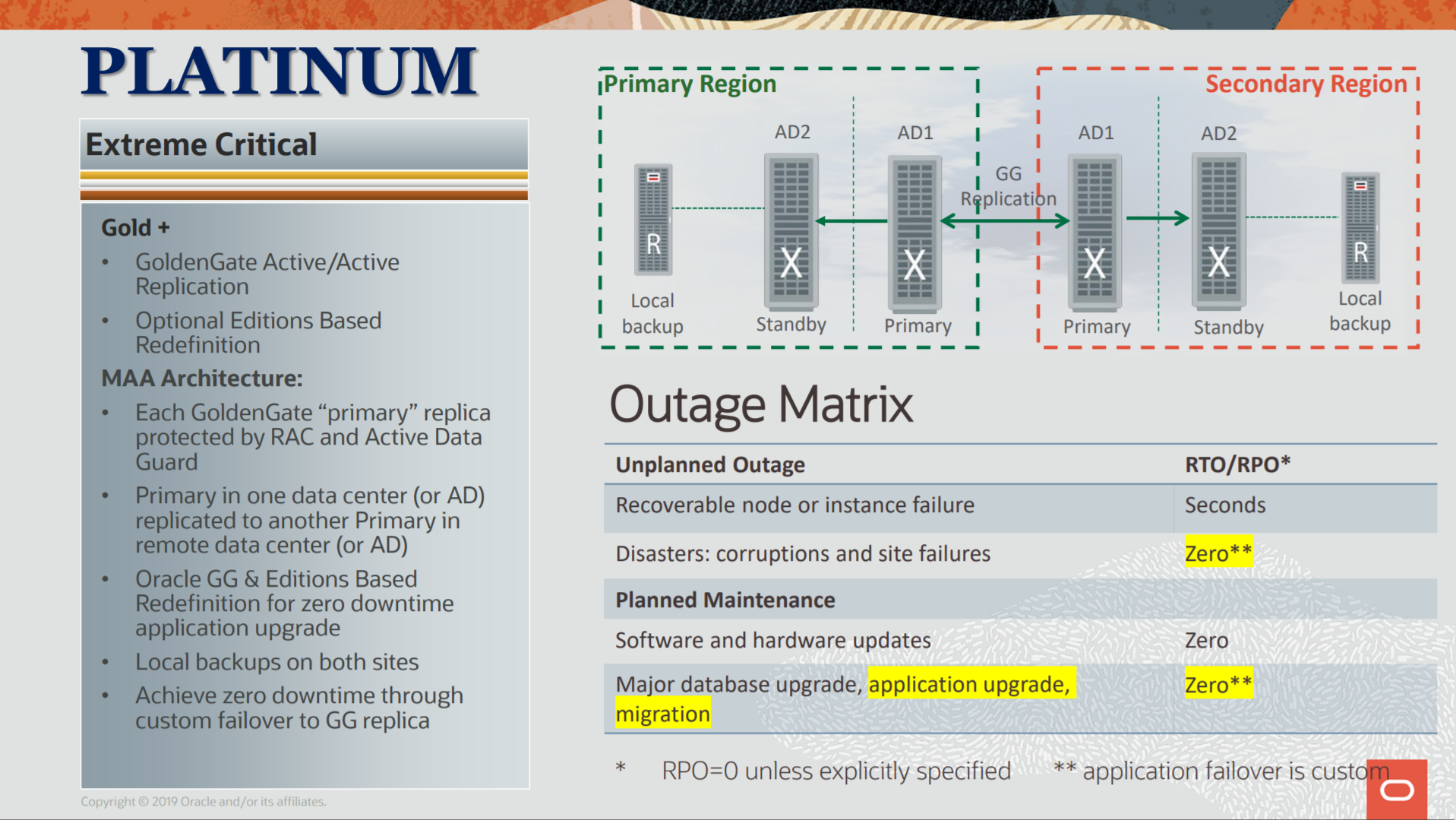Quick post for today. Recently needed to upgrade to the last version of Autonomous Health Framework (AHF) from an Exadata running GI 19.5. In this particular case the GI was not even running AHF, but still using the standalone TFA that comes with it. So, here I will show how to upgrade to the last version of AHF and replacing the TFA as well.
Category Archives: Database
2020-2021
My first post of 2021 is just Thank You. Thanks for reading my posts and following me on my social media (Twitter/LinkedIn/Blog). Thanks for all of the 41.000 site access during the last year and for all that attended my sessions at the online events. I hope that was possible to help you with something about Oracle.
Duplicate, Restore and ZDLRA
From time to time we need to clone/duplicate some databases and we have several ways to do that, most common are duplicate and restore (with a new name) commands. But when using RMAN catalogs we need to take extra care because we can up lose the backups of the entire database because of the wrong way to do that. And this is even more crucial when using ZDLRA.
You need to choose between The Good and The Bad. Because if you choose wrong you will have troubles with The Ugly. The key factor here is the RMAN/ZDLRA catalog, choose wrong and you will automatically add bad data in the internal catalog tables and if you will try to clean, can delete database backups.
In this post, I will show how correctly clone one database when you are using the RMAN/ZDLRA catalog and the reasons for that. I will show the problems and the collateral effects for ZDLRA when you choose the bad way.
ZDLRA, RA_CLIENT_CONFIG_FILE channel parameter
When we are enrolling a database at ZDLRA we need to configure the RMAN channel parameters to point to our definitions like RA_WALLET and CREDENTIAL_ALIAS. The same is done for backup and restore channels. But this can be done in a different way using RA_CLIENT_CONFIG_FILE for ra_library.
MOVE_BACKUP and ZDLRA
As I wrote previously, sometimes we need to have long-term/archival backups due to some compliance. And usually, these backups are stores outside (like a vault/bunker) but for sure not at the same datacenter as the database. But how we can do this at ZDLRA?
In my post about COPY_BACKUP, I wrote how to have an external copy of one backup set at ZDLRA. But this is not the best option when we need to archive some backup because it continues to follow the same recovery window as the original backup set. This means that if you need to have some kind of archive for 5 years, you need to define your recovery window (at the policy level) to this window. And for sure this will put high pressure on space usage because all backups will be stored until became obsolete.
So, the best way is to use the KEEP backups from rman. And as I wrote in my previous post, they not interact/broke with the incremental forever strategy. Is possible to generate the keep backup, and using the DBMS_RA.MOVE_BACKUP moves these backups to a filesystem destination (and further you can copy/store) and archive it outside of ZDLRA.
KEEP backups and ZDLRA
KEEP backups from rman are used to provide long-term and archival retention. They are used to bypass the default policy retention and are used to sustain some regulations/compliances (like HIPAA, or others) that require archival retention. But with ZDLRA they are treated in a different way. Here I will show how the KEEP backups can impact your backup strategy for ZDLRA.
COPY_BACKUP at ZDLRA
As you know, ZDLRA is one appliance dedicated to provides you zero data loss in several (planned and unplanned) outages. All the backups are stored inside of the delta store to be processed, and they are deconstructed, meaning that the rman backup set does not exist (as is the formal backup set file).
But sometimes we need to copy/extract some backups outside of ZDLRA and copy it to the filesystem. Maybe because some regulations/compliances need to store for long-term/archival purposes. But some caveats are important to be explained.
Patching OCW for OH
If you search around about how to patch Oracle Database you will find a lot of blog posts teaching how to patch your Oracle Home (OH) (I will not put the list here because it will be enormous – but just follow Mike Dietrich). But most of them write nothing about OCW, how to patch it, or if it is needed to patch OCW. And unfortunately, even Oracle is not clear about that.
Just to complement, recently Liron Amitzi got one issue related to OCW. And if you search more, you will find that Frits Hoogland wrote something about it too. But in the end, need I to concern about OCW? And, what is OCW?
OCW
OCW means Oracle Clusterware, and basically is the core for the Grid Infrastructure, it is everything there. But for OH is important too because if the database needs to communicate with GI Clusterware it uses the OCW binaries/libraries that are at OH (like srvctl, crstctl) to do that. So, if have some kind of bug at this portion of OCW, it needs to be patched.
The point is that the only place that you can find the OCW patch is under the GI RU patch. Look at the readme for last GI RU 19.8.0.0.200714 (Patch 31305339):
And if you look at the readme for DB RU 19.8.0.0.200714 (Patch 31281355) there is no reference to the OCW patch. So, if apply just the DB RU the OCW will not be updated.
And just to remember you that patch 31305087 does not exist alone to be downloaded:
ZDLRA + MAA, Protection for Platinum Architecture
The Platinum architecture is the last defined at MAA references and is the highest level of protection that you can achieve for MAA. It goes beyond the Gold protection (that I explained in my previous post) and you can have application continuity even version upgrade for your database.
The image above was taken from https://www.oracle.com/a/tech/docs/maa-overview-onpremise-2019.pdf
FGA, AUDIT_CONDITION, and SYS_CONTEXT
Recently Flora tweeted to her blog post about a conditional audit for Fine Grant Audit (FGA) and questioned “Who on earth is doing that ?!”, and I remembered that I made something similar at my previous job. So, here a little glimpse of how to use the FGA, AUDIT_CONDITION, and SYS_CONTEXT to conditionally decide if you audit or no.
So, at my previous job, years ago (while still using 11g), I received these requests: “We need to audit everything that does not come from the application”, and more, “the audit needs to have the small overhead possible”.
And to explain the context why these are important, the system was used to control the judicial processes (court of justice) and the database handles more the 1 million of IOPS (the reason for the small needed overhead). And since is a sensible area, the system itself if heavily audited (application have own audit system), so we don’t need to audit the app – but everything else.





